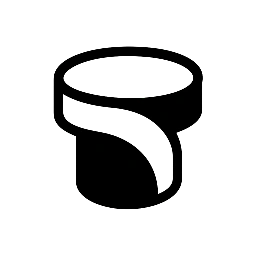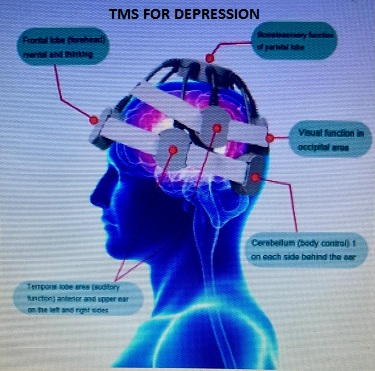Table of contents
What is the mechanism of action of TMS?‘
A step forward in treatment-resistant depression
Quick Results with high Efficacy
Introduction
The breakthrough concerns behavioral therapy with the Transcranial Magnetic Stimulation (TMS), which is imagined to be the latest remedy for depression, especially for patients who have not improved by conventional means. Commonly known as “magnetic therapy” for depression, TMS is one of the non-invasive procedures where the use of magnetic fields stimulates nerve cells in the brain for symptom alleviation and quick relief for many patients
“What is the mechanism of action of TMS?”

Instead of electroconvulsive therapy (ECT), which involves inducing general anesthesia for generalized seizures, TMS coils are placed on one’s scalp, usually over the dorsolateral prefrontal cortex (DLPFC), which is a region that functions differently in patients with depression. They’re delivered in short, intense magnetic pulses that penetrate across the skull, producing small electrical currents inside the nerve cells of the brain.
Although the precise mechanism for the action of TMS is unknown, it normalizes dysfunctional patterns in the brain that are related to mood.
Enhancement of Neuroplasticity: The TMS is believed to reopen or create new pathways in the brain, hence making it easier for the patients to break this chain of thought concerning their depression.
Modulation of Neurotransmitter Release: It can exert influence over the release of neurotransmitters, chemical messengers of the brain that play a vital role in mood.
A step forward in treatment-resistant depression

TMS has certainly attracted a lot of attention because it promises an alternative for those patients who, although given an antidepressant or put into therapy, still do not improve. TMS was cleared by the U.S. Food and Drug Administration (FDA) for the indication of major depressive disorder in 2008. Its indication has been expanded for obsessive-compulsive disorder (OCD), certain types of migraines, and smoking cessation therapy.
Quick Results with high Efficacy

One of the most impressive things about TMS is the potential for rapid improvement in symptoms. Whereas people taking conventional antidepressants expect to wait weeks, many TMS patients report observing differences within weeks, some of them with even faster improvements from newer, accelerated protocols.
Stanford Accelerated Intelligent Neuromodulation Therapy (SAINT), for example, an intense and individualized application of TMS, has produced very favorable outcomes. In a double-blind controlled study, 79% of those with severe depression conditions went into remission, often after several days, with these accelerated protocols. With more routine protocols using TMS, it would not be uncommon to see around 50% response rates and over 30% remission; combined with psychotherapy, even greater success would be typical.
The rapidity with which this action can manifest is particularly important among people with maximal severity in depression or high risk, in that it lowers suffering, pain, and suicidal thinking fairly quickly.
Expectation in TMS Treatment

A conventional course of TMS would be a set of multiple sessions, generally five days a week for a duration of about four to six weeks. Each session can be between 3 and 40 minutes, depending on the protocol being followed. During a session:
The patient is kept alert but in a comfortable position.
It’s not unusual for earplugs to be used to muffle some of the sounds emitted by the coil of a magnetic stimulator.
The coil is placed over a particular region of their scalp while delivering magnetic pulses. Most people feel a tapping sensation in their head while this occurs.
Most people will go back to their usual daily activities, including driving themselves home, with the same degree of convenience as they had before the appointment because there has been no anesthesia or sedation.
Side and Safety Effects
TMS is considered relatively safe and well-tolerated, with most side effects being mild and transient:
Discomfort at the stimulation site on the scalp or pain
Headaches
Facial Twitching, Spasmodic, or Tingling
Lightheadedness
These side effects usually go away with time. Seizures and similar serious side effects are extremely rarely recorded (less than 0.01% per session).
Siding adverse side effects usually clear with time as people take the treatment. In cases of severe adverse side effects, seizure is among these; however, such occurrences are extremely rare (<0.01%/session). Unlike medications taken for antidepressants, TMS usually does not provide systemic reactions such as weight gain, dry mouth, and sexual dysfunction.
Future Directions
Research continues to explore new TMS protocols and applications:
Accelerated TMS: Shorter but effective protocols for speeding up results.
Image-guided TMS: Targeting stimulation with brain imaging as a precise and possibly individualized treatment to achieve potentially better results.
Expanded Indications: Studies of TMS in other neurological and psychiatric disorders.
Conclusion
Principally, by TMS, indubitable magnetic therapy seems to be an up-and-coming frontier in mental health treatment. It is noninvasive, has a good side effect profile, and has the potential for rapid, meaningful effects on symptoms to offer renewed hope to an increasing number of patients suffering from depression, especially those who seem to be primarily unsuccessful in other therapies. Evolving research further ensures that TMS will take on an increasingly important role in changing the practice of depression care.


Leave a Reply